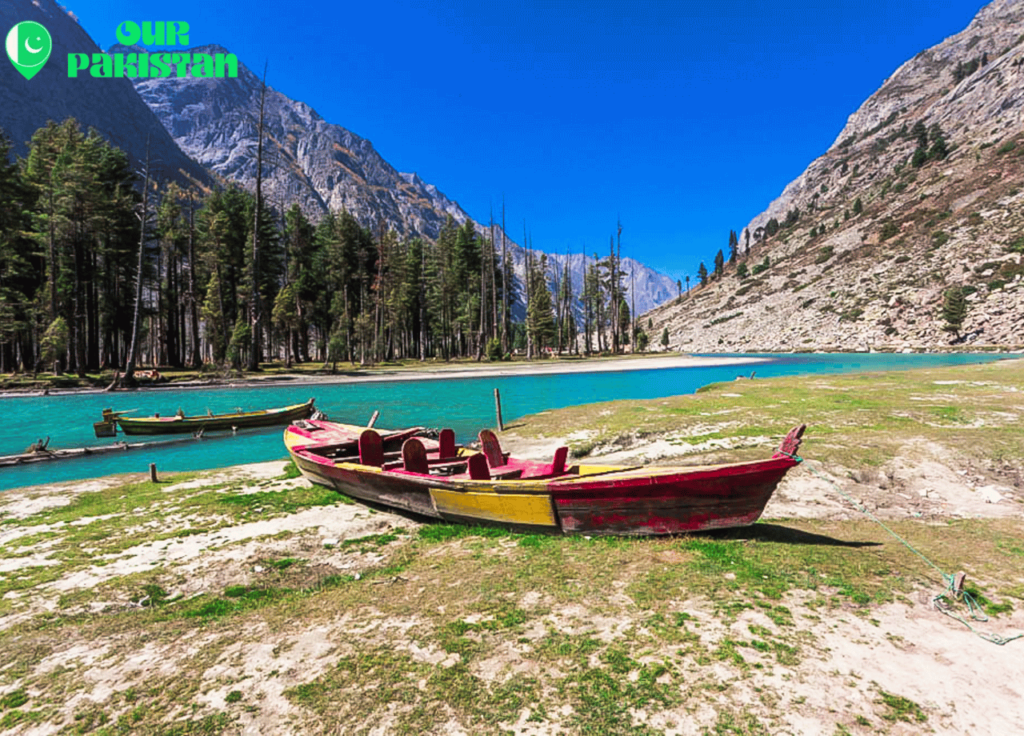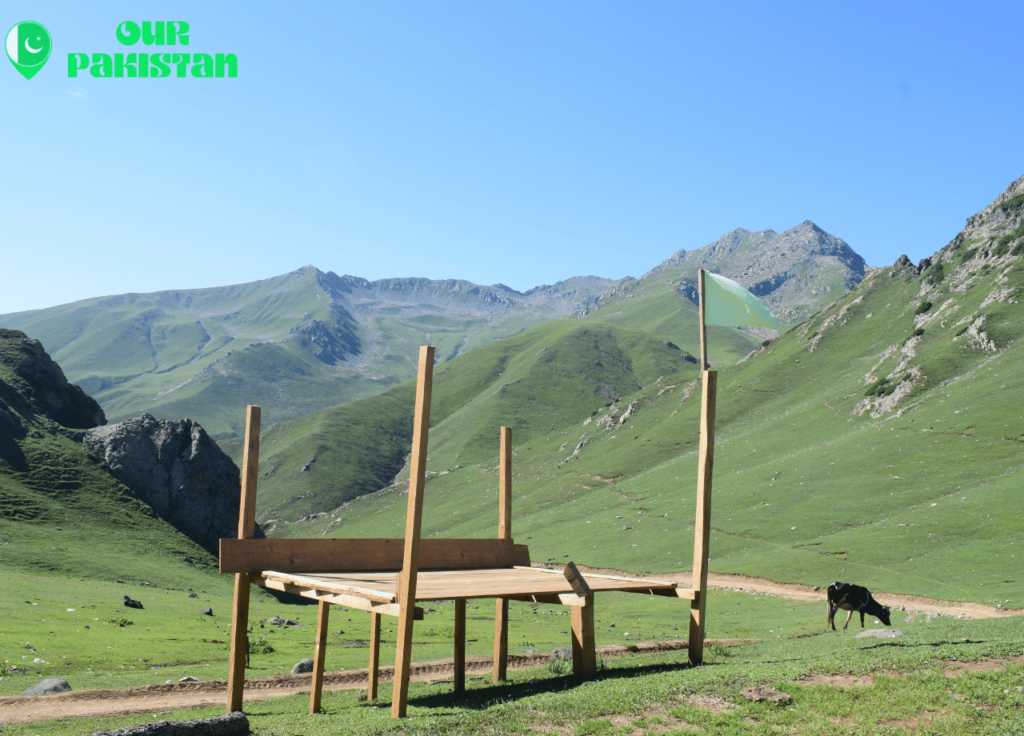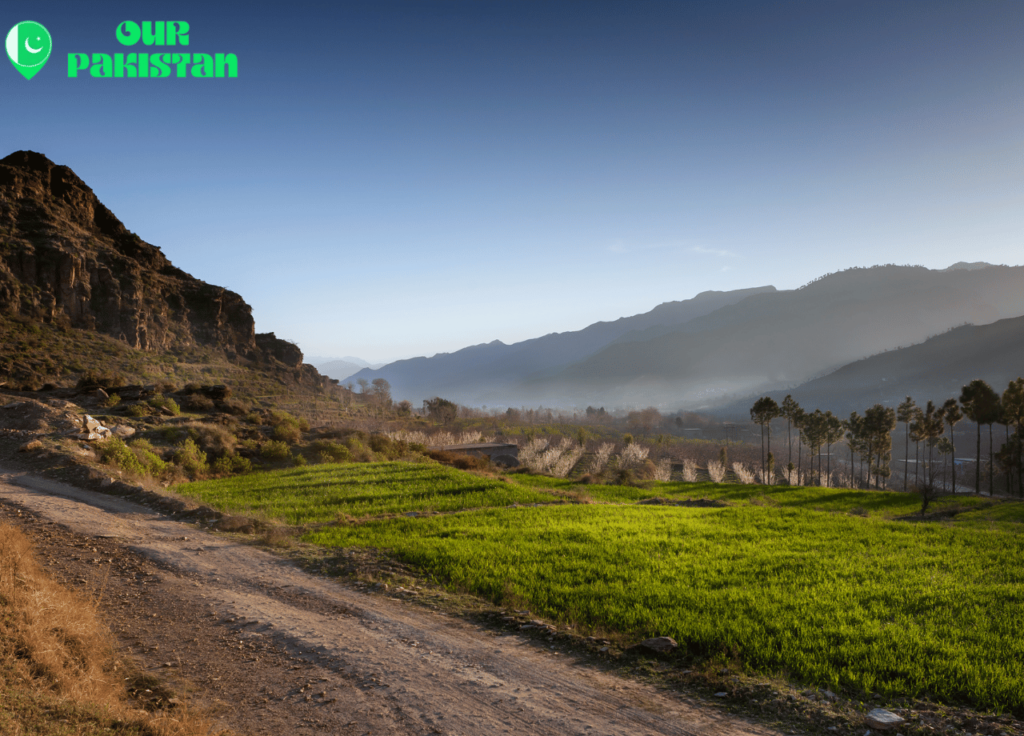Nestled in the heart of Pakistan, the Swat Valley, often hailed as the “Switzerland of Pakistan,” is a testament to the country’s staggering natural beauty and rich cultural tapestry. This majestic valley, with its lush green landscapes, crystal-clear rivers, and breathtaking mountains, offers a glimpse into a region that has mesmerized travelers and historians alike. Beyond its scenic vistas, Swat Valley’s weather patterns contribute to its allure, fostering a unique blend of flora and fauna that enhances its natural beauty. The valley’s hospitality, deeply ingrained in Pashtun culture, adds yet another layer to its appeal, inviting tourists from across the world to experience its warmth and generosity.
This article delves into the multifaceted charm of Swat Valley, exploring its rich history that dates back to the era of Alexander the Great and the Gandhara civilization. It shines a light on the natural beauty that has made Swat Valley a cornerstone of tourism in Pakistan, highlighting the region’s potential for adventure and relaxation alike. Further, it examines Swat’s standing as a cultural hub, where ancient traditions meet modernity, and where the hospitality industry thrives amidst increasing Swat Valley tourism. As we navigate through the evolution of modern Swat and its growing appeal as a tourist destination, the narrative encapsulates the essence of Swat Pakistan – a region that stands as a beacon of natural beauty, rich history, and cultural diversity.

The Rich History of Swat
Ancient Civilizations
Swat Valley, a region rich in history, was a significant center of early Buddhism and part of the ancient civilization of Gandhara. It has been influenced by various ruling powers over the centuries, starting from the Mauryan Emperor who conquered the region from the Greeks around 305 BCE. This era saw the introduction of Buddhism into Swat by Emperor Ashoka, marking the beginning of a long-standing Buddhist presence in the area.
Following the decline of Mauryan rule, Swat experienced control by the Greco-Bactrians and briefly by the Scythians of the Central Asian Steppe. The Indo-Greek Kingdom, known for its cultural synthesis, eventually established its rule, followed by the Kushans who ushered in what many consider the golden age of Gandhara.
Role in Buddhism
Under Kushan rule, particularly during the reign of King Kanishka, Swat Valley became a prominent site for Buddhist art and the construction of numerous shrines. This period significantly contributed to the spread of Buddhism from Swat to other parts of Asia. The archaeological discoveries, including stupas and statues, underscore Swat’s role as a key center of Buddhist activity until the region saw a decline in Buddhism due to invasions by the Alchon Huns around 465 CE.
The Hindu Shahi dynasty took over in the 8th century, marking the end of Buddhist dominance in the region. However, the legacy of Buddhism persisted, evident from the artifacts and monastic sites that continued to be revered and studied.
Colonial and Post-Colonial Influence
The rich history of Swat also includes its experiences during the colonial and post-colonial periods. The valley was recognized as a princely state during the time of the Indian partition in 1947 and maintained a degree of autonomy until it was fully incorporated into Pakistan in 1969. The subsequent decades saw significant political and social changes, including the impact of Zulfiqar Ali Bhutto’s policies in the 1970s, which led to tensions between traditional landowners and emerging political ideologies.
The Soviet intervention in Afghanistan during the late 20th century further influenced Swat, as geopolitical strategies brought significant military and ideological campaigns to the region, affecting its social fabric and political landscape.
Natural Beauty of Swat
Swat Valley, often referred to as the “Switzerland of Pakistan,” is renowned for its stunning natural landscapes, which include snow-capped mountains, glacial rivers, and picturesque lakes. The area’s natural beauty is a major draw for both local and international tourists, offering a serene and captivating environment.
Snow-Capped Mountains
The northernmost areas of the Swat district, notably the Swat Kohistan region, are characterized by high valleys and alpine meadows. These areas are home to numerous glaciers that feed the Usho and Gabral rivers, collectively known as the Utrar River. These rivers converge at Kalam and thereafter form the Swat River, which is the backbone of the Swat Valley. During winter, places like Malam Jabba, Madyan, Bahrain and Kalam Valley transform into a white wonderland, attracting hundreds of tourists eager to enjoy snowfall and skiing.
Glacial Rivers and Lakes
The glacial rivers and lakes in Swat are not only significant for their hydrological importance but also for their breathtaking beauty. Alpine lakes such as Mahodand and Saifullah are popular spots, surrounded by stark mountains and lush forests, offering spectacular views and serving as paradise for anglers looking to catch elusive trout fish. The journey to these lakes is as mesmerizing as the destinations themselves, often requiring treks through rugged terrains adorned with lush greenery and vibrant wildflowers.
Scenic Landscapes
Swat Valley’s scenic landscapes are composed of lush forests, verdant alpine meadows, and the majestic Hindu Kush mountain range. This region is much-adored for its towering peaks and wildflower-strewn meadows, with the graceful Swat River winding through the valley, enhancing the picturesque setting. The area’s rich biodiversity and natural beauty attract nature and wildlife lovers, offering several trails and treks that provide awe-inspiring views of the surroundings.
The natural beauty of Swat Valley, with its diverse features from snow-clad valleys to alpine lakes and scenic landscapes, continues to enchant visitors, making it a cornerstone of tourism in Pakistan.
Swat: A Cultural Hub
Swat Valley, renowned not only for its natural splendor but also as a vibrant cultural hub, offers a rich tapestry of ethnic diversity, traditional crafts, and culinary delights that reflect its historical and cultural heritage.

People and Ethnicities
The dominant population in Swat comprises the Pashtuns, primarily the Yusufzai tribe, along with minor settlements of Shinwari, Tarkani, Ghoryakhel, and Sulaimankhel tribes. The cultural fabric of the valley is further enriched by the presence of communities speaking Kohistani languages, such as Torwali and Kalami, especially in the Swat Kohistan region. This ethnic diversity not only adds to the cultural richness but also influences the local customs, traditions, and daily life in Swat.
Traditional Crafts and Art
Swat Valley is a cradle of exquisite traditional crafts, influenced by its rich historical ties to the Gandhara civilization. The local artisans are renowned for their skills in woolen crafts, including the making of ‘Sharai’ blankets and shawls, which are essential for the cold winters. The intricate embroidery known as ‘Nekpikheil’ showcases the meticulous artistry of Swati women, involving silken, cotton, and golden lacework. Woodcarving and stone carving also hold a special place in Swat’s artisanal legacy, with patterns and techniques passed down through generations, echoing the artistic prowess of their ancestors from the Gandhara era.
Culinary Delights
The culinary scene in Swat is as diverse as its landscape, offering a blend of traditional and modern flavors. Local hotels and restaurants, such as BurjAlSwat and Swat Serena Hotel, serve a wide array of dishes that highlight the rich gastronomic heritage of the region. From the aromatic teas and pastries at The Tea Lounge to the authentic Pashtun cuisine at Hujra Restaurant Fizaghat Swat, the culinary offerings in Swat are a delight for both local and international palates. These dining experiences not only cater to the taste buds but also provide a window into the local culture and hospitality that Swat is famous for.
Swat’s status as a cultural hub is firmly rooted in its diverse population, traditional crafts, and rich culinary traditions, each of which contributes to the valley’s unique cultural identity and attracts tourists from around the world.
Modern Swat and Tourism
Swat Valley has evolved into a premier tourist destination, renowned for its stunning landscapes and rich cultural heritage. This section delves into the modern aspects of tourism in Swat, focusing on the accommodations available, the variety of tourist activities, and the safety measures ensuring a pleasant visit for tourists.
Hotels and Accommodations
The hospitality sector in Swat has expanded significantly to cater to the increasing number of visitors. The valley offers a range of accommodations from budget-friendly hotels to luxurious resorts, ensuring every traveler finds a suitable place to stay. Notable establishments include the Pearl Continental Hotel Malam Jabba, which offers 5-star amenities including a fitness center and fine dining. Budget options like Hotel One Swat provide comfortable lodging with essential services like free WiFi. For a more immersive experience, the Swat Hilton Hotel by Khan Familia and the Shelton Rezidor Swat feature facilities that allow guests to enjoy splendid river views and local cuisine.

Top Tourist Activities
Swat’s natural beauty and historical significance offer a plethora of activities for tourists. The Swat Museum and Mingora Bazaar are must-visit destinations, showcasing the region’s heritage and vibrant local life. Outdoor enthusiasts can engage in trekking, hiking, and river rafting, with the valley’s trails offering breathtaking views and challenging routes. Winter sports, particularly at Malam Jabba, attract adventurers looking to ski in one of Pakistan’s most picturesque settings.
Safety and Accessibility
Ensuring the safety of tourists has been a priority for local authorities, resulting in Swat being regarded as a secure destination for both local and international visitors. The presence of security forces and improved infrastructure contribute to a safe environment for tourists. However, it is advised to stay updated with travel advisories and take common-sense precautions during the visit.
Swat Valley continues to thrive as a tourist hub, combining its historical allure with modern amenities and safety measures to provide a memorable experience for all who visit.
Conclusion
The exploration of Swat Valley, often celebrated as the “Switzerland of Pakistan,” showcases a journey through its enchanting natural landscapes, compelling history, and vibrant cultural heritage. The fusion of these elements not only highlights the valley’s importance as a tourist destination but also as a treasure trove of biodiversity and a living museum of centuries-old civilizations. The narrative woven around its historic pathways, from the era of Alexander the Great to the present day, alongside its natural beauty and cultural richness, underscores Swat’s pivotal role in enriching Pakistan’s geographical and cultural tapestry.
Reflecting on the broader implications, Swat Valley emerges not just as a cornerstone for tourism in Pakistan but as a symbol of the country’s resilience and diversity. The potential for future research and action in areas such as sustainable tourism, conservation, and cultural preservation promises to further amplify Swat’s significance on both national and international stages. As this article concludes, the enduring charm of Swat Valley continues to beckon travelers and scholars alike, offering endless opportunities for exploration, discovery, and inspiration.
FAQs
Swat District is often called the “Switzerland of the East” due to its captivating landscape. This nickname was famously given by Queen Elizabeth, highlighting its resemblance to the scenic beauty of Switzerland.
Swat Valley, located in the Malakand Division of Khyber Pakhtunkhwa, Pakistan, is renowned for its exceptional natural beauty. It is a favored destination for tourists who are drawn to its picturesque landscapes.
The Swat Valley is recognized as the “Switzerland of Pakistan.” Known for its historical significance and stunning vistas, it attracts numerous visitors each year who come to experience its natural allure.
In historical texts, Swat was known as Udyana and Suvastu. These names reflect the valley’s scenic beauty and the river that flows through it. The area is rich in cultural and historical remnants that span a broad timeline.